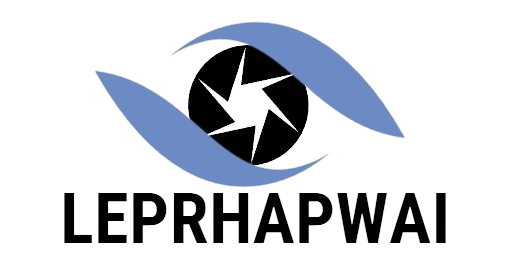Unraveling the complexities of the human mind and understanding the potential roadblocks that hinder student success has long been a quest in the realm of education. As educational institutions strive to create conducive environments for learning, educators and policymakers continuously seek innovative tools to identify at-risk students and provide them with the support they need. In this technological age, where data holds the key to transformative insights, the integration of big data in predictive learning analytics emerges as a powerful gateway to unlocking student potential. By harnessing the vast ocean of information generated in education, we embark on a journey to uncover patterns and connections that not only foresee academic challenges but also pave the way for personalized interventions. In this article, we delve into the transformative role of big data in predictive learning analytics, unveiling its ability to revolutionize the educational landscape and ensure no student is left behind.
1. Unveiling the Hidden Power: How Big Data is Revolutionizing Predictive Learning Analytics
Big data is transforming the field of predictive learning analytics, unlocking a realm of possibilities that were previously hidden. With vast amounts of data being generated every day, institutions and organizations are harnessing this power to gain valuable insights into student behavior, performance, and engagement. Gone are the days of relying solely on subjective observations and small sample sizes – big data is revolutionizing the way we understand and predict student outcomes.
So, what exactly does this mean for the world of education? Here are some key ways in which big data is reshaping predictive learning analytics:
- Improved accuracy: By analyzing large data sets, predictive learning analytics can provide more accurate predictions and insights into student performance. This enables educators to identify at-risk students early on and intervene with personalized support, ultimately enhancing student success rates.
- Enhanced personalization: Big data allows for the creation of personalized learning paths tailored to each student’s strengths, weaknesses, and learning style. By leveraging data-driven insights, educators can deliver targeted interventions, adaptive content, and individualized support to maximize student engagement and achievement.
- Early identification of trends: Through big data analysis, patterns and trends in student behavior and performance can be identified in real-time. This allows educators to proactively address any arising issues or challenges, such as learning gaps or disengagement, before they negatively impact student outcomes.
2. Illuminating Pathways to Success: Big Data’s Role in Identifying At-Risk Students
Big data has revolutionized various industries and now it holds immense potential in the field of education. With the power to analyze and interpret vast amounts of data, schools and educational institutions can now identify students who are at-risk of academic and personal challenges. By leveraging advanced algorithms and machine learning techniques, big data can help illuminate pathways to success for these students.
One way big data helps identify at-risk students is by analyzing their academic performance. By closely examining factors such as attendance, grades, test scores, and engagement levels, patterns and trends can be identified. This analysis can provide valuable insights into the students’ strengths, weaknesses, and areas that need attention. Additionally, big data can also monitor behavioral patterns, identifying signs of disengagement or potential emotional distress. Understanding these indicators can enable early intervention and provide the necessary support systems to prevent students from falling through the cracks.
- By analyzing academic performance and engagement levels, big data can identify patterns and trends.
- Early intervention and support systems can be put in place to prevent students from struggling.
- Big data also helps identify behavioral patterns indicating disengagement or emotional distress.
- Insights gained from big data analysis can guide personalized interventions for at-risk students.
The role of big data in identifying at-risk students goes beyond academic performance. It can also analyze social and demographic data to provide a deeper understanding of the students’ background. Factors such as socioeconomic status, family structure, and community environment can greatly impact a student’s academic journey. By considering these variables, educators and administrators can develop targeted interventions that address the specific challenges faced by at-risk students. Harnessing the potential of big data not only illuminates pathways to success but also promotes equity and inclusivity in education.
- Social and demographic data analysis allows for a comprehensive understanding of students’ background.
- Targeted interventions can be developed based on the specific challenges faced by at-risk students.
- Big data promotes equity and inclusivity in education by addressing individual needs.
3. Cracking the Code: Leveraging Big Data to Predict and Support Student Success
Leveraging Big Data to Predict and Support Student Success
In the ever-evolving landscape of education, the use of big data has emerged as a powerful tool to uncover patterns and predict student success. By analyzing vast amounts of student data, educators and institutions are now equipped with the ability to identify at-risk students early on and provide them with the necessary support.
With the help of advanced algorithms and machine learning techniques, big data analytics can assess various factors that affect student performance. From academic engagement to social and emotional well-being, these insights enable educators to tailor their teaching methods and resources to address individual needs, ultimately leading to improved student outcomes. Additionally, by identifying trends and common challenges faced by students, institutions can collaborate to develop targeted interventions and support systems, ensuring every student has an equal opportunity to succeed.
4. An Unprecedented Insight: Exploring the Influence of Big Data in Predictive Learning Analytics
Big data has revolutionized the field of predictive learning analytics, offering an unprecedented insight into the patterns and trends of educational data. With the ability to collect, store, and analyze vast amounts of information, researchers and educators can now gain a deeper understanding of the factors that influence student learning outcomes. This newfound understanding has the potential to drive significant improvements in education by informing personalized instruction, identifying at-risk students, and developing targeted interventions.
In the world of predictive learning analytics, big data enables the exploration of various crucial elements. These elements include:
- Individual Learning Patterns: Big data allows for the identification of subtle learning patterns and preferences within individual students. By analyzing their engagement, performance, and interactions with learning materials, educators can tailor instructional strategies to meet each student’s unique needs.
- Predictive Modeling: With big data, researchers can develop sophisticated predictive models that forecast student performance, allowing educators to intervene early when at-risk students are identified. Through predictive modeling, institutions can implement proactive strategies to improve educational outcomes.
- Evidence-Based Decision Making: Leveraging the power of big data in predictive learning analytics enables evidence-based decision making. By analyzing vast datasets, educators and administrators can make informed decisions about curriculum development, resource allocation, and policy adjustments, ensuring that educational practices are grounded in data-driven insights.
The influence of big data in predictive learning analytics cannot be underestimated. It opens up new possibilities for understanding and improving student learning outcomes, ultimately transforming education into a more personalized and effective experience for students around the globe.
5. Harnessing Data’s Potential: Identifying and Nurturing At-Risk Students through Advanced Analytics
In today’s rapidly evolving educational landscape, harnessing the potential of data has become a critical aspect of student support and success. Advanced analytics presents a powerful tool that enables educational institutions to identify and nurture at-risk students, ensuring that each individual receives the tailored support they need to thrive. By utilizing sophisticated data analysis techniques, institutions can gain valuable insights into student patterns, behaviors, and outcomes, enabling them to intervene and provide targeted interventions to those who need it most.
Advanced analytics allows for the identification of at-risk students through the examination of various data points. By analyzing factors such as attendance records, grades, test scores, course selections, and demographic information, institutions can develop profiles that highlight students who may be facing challenges or exhibiting signs of academic struggle. Armed with this information, educators can then implement personalized strategies to address these issues, such as offering additional academic support, counseling services, or targeted interventions. With advanced analytics, at-risk students can be proactively identified, ensuring that no student falls through the cracks and allowing for the timely deployment of necessary resources to support their academic journey.
As the digital era continues to transform the landscape of education, the emergence of big data has revolutionized the way we understand and support student learning. In this article, we dived deep into the world of predictive learning analytics and explored its remarkable ability to identify at-risk students.
Harnessing the power of advanced algorithms and sophisticated data analysis, predictive learning analytics enables educators to uncover invaluable insights into each student’s journey. By examining a vast array of data points, ranging from academic performance to digital learning behaviors, we can now predict with uncanny accuracy which students are most at risk of falling behind.
But this newfound power comes with great responsibility. While predictive learning analytics provides educators with a powerful tool to intervene early and offer personalized support, we must never forget the human side of education. Behind every dataset and algorithm lies a unique individual, and it is our duty to ensure that these insights are used ethically and compassionately.
Moreover, the role of big data in predictive learning analytics extends beyond identifying at-risk students. It also allows us to gain a deeper understanding of the diverse factors that contribute to student success. By recognizing patterns and trends across a wide range of variables, we can discover new strategies and interventions that have the potential to revolutionize education as we know it.
As we look towards the future, it is clear that big data and predictive learning analytics will continue to play a crucial role in shaping the education landscape. However, we must always remember that it is the combination of data and human intervention that truly holds the key to unlocking the potential of every student. By using big data as a guiding force, we can create a learning environment that fosters student growth, nurtures their individuality, and ensures that no one is left behind.
In conclusion, the role of big data in predictive learning analytics is undoubtedly transformative. It has the power to predict and identify at-risk students with impressive accuracy, guiding educators towards targeted interventions. However, we must always remember to balance data-driven insights with compassion and humanity to create a truly inclusive educational system. So let us embrace the power of big data while never losing sight of our ultimate objective: to support and empower every student on their journey towards success.











